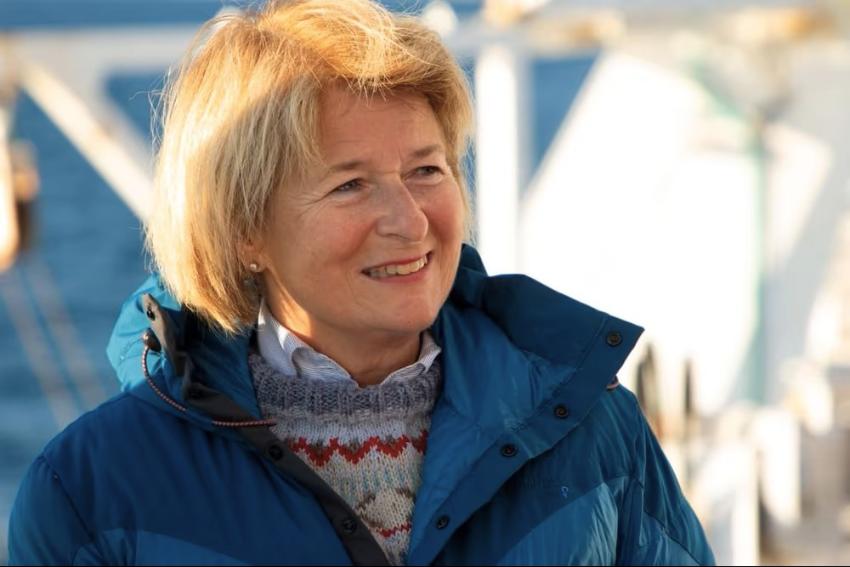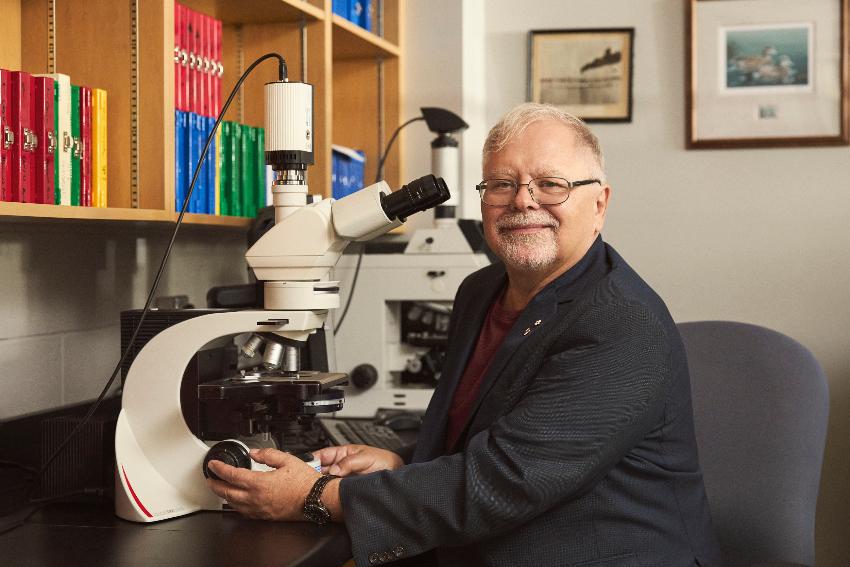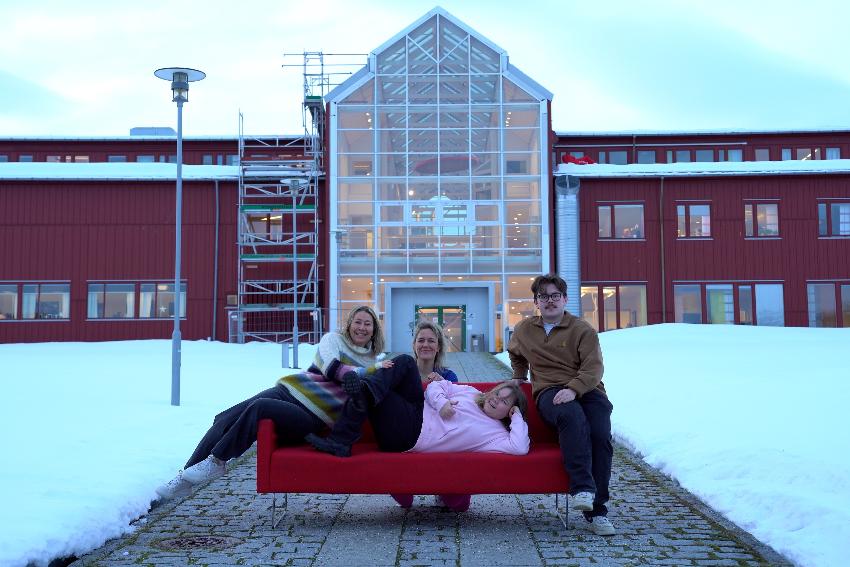Climate change leads to tree growth conditions on the tundra
Data from the weather stations of the Climate-Ecological Observatory for Arctic Tundra (COAT) indicate that the tundra in Svalbard and East Finnmark has experienced conditions conducive to tree growth over the past two summers. However, it may take a very long time before forests establish themselves.
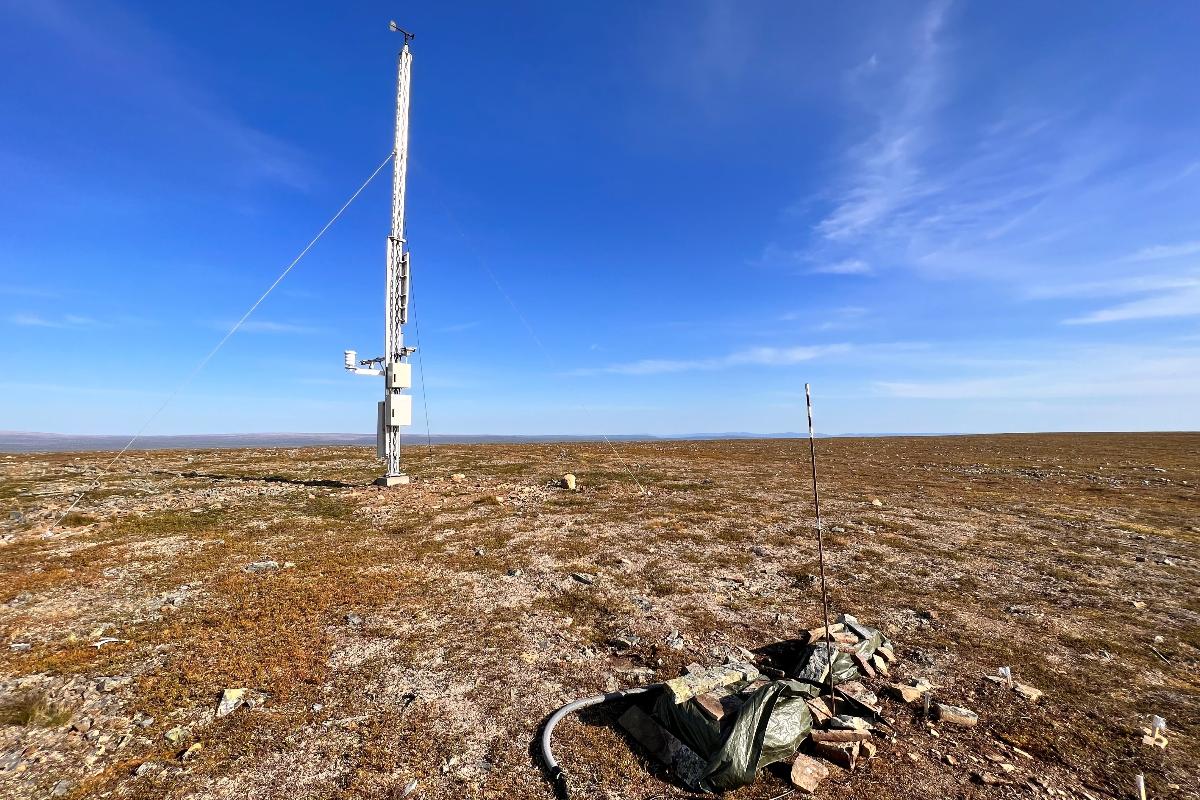
Last year, it attracted significant attention when Longyearbyen, for the first time, recorded an average July temperature exceeding 10°C, surpassing the classical criterion for polar climate, which typically precludes tree growth.
This summer has brought new record-high temperatures to both Svalbard and East Finnmark. In 2024, COAT's weather stations on the most barren mountain peaks of the Varanger Peninsula at 70oN in East Finnmark —far from the existing tree line—recorded temperatures 3-4 degrees above this temperature threshold.
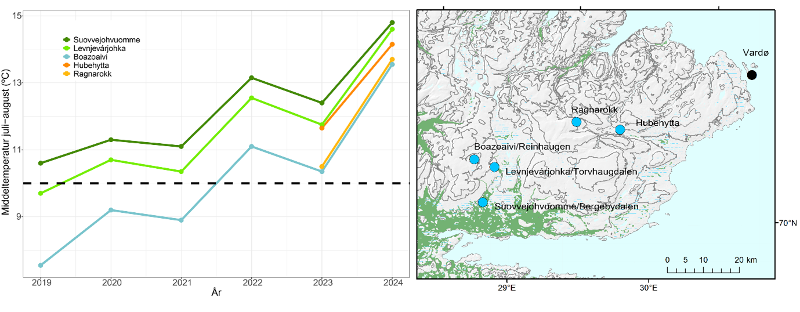
Not random
Weather normally varies significantly from year to year, so records could appear randomly. However, based on the normal variation over the last 30 years (1991-2020), the temperatures recorded in August 2024 in Vardø (Eastern Finnmark) would randomly occur only twice in 1,000 years, and in Longyearbyen, twice in 10 million years.
This strongly suggests that the record-high summer temperatures of the past two years are not due to chance but are a result of ongoing climate changes in the Arctic.
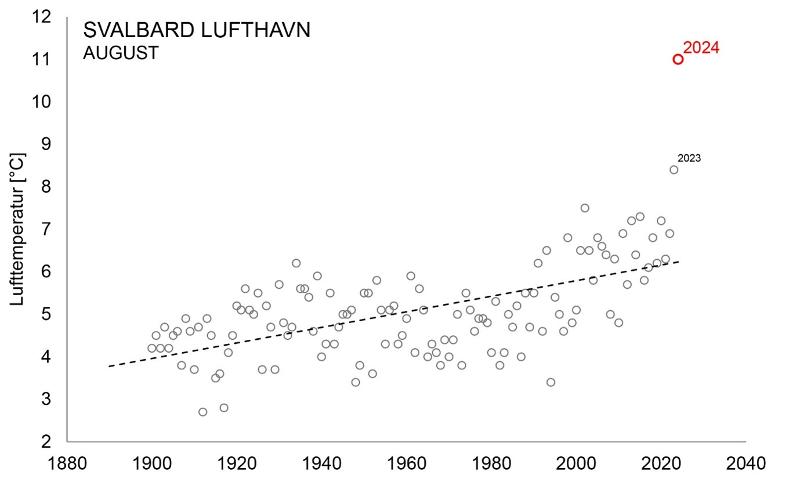
More precise climatic criteria for tree growth
While the classic 10-degree rule generally works well for Arctic and alpine tree lines, recent studies have shown that a combination of the length of the growing season and average temperature provides more precise criteria (Paulsen and Körner 2014).
Specifically, the growing season must consist of at least 94 snow-free days with daily temperatures above 0.9°C, and the average temperature over this season must be at least 6.4°C. If these criteria are met over many years, the climate is suitable for tree growth.
In both 2023 and 2024, these criteria were met at all COAT weather stations on the Varanger Peninsula, as well as some stations on Svalbard.
At Reinhaugen/Boazoaivi—located in the high mountains at 470 meters above sea level and deep within the low-Arctic tundra of the Varanger Peninsula—the growing season lasted 104 days with an average temperature of 12.0°C.
The Nedre Sassendalen station on the high-Arctic tundra of Svalbard had a 102-day growing season with an average temperature of 7.3°C.
How quickly can forest replace tundra?
Summers that meet the criteria for tree growth are expected to eventually lead to continuous forest. However, the establishment of forests on the tundra can take a long time.
Studies of past climate changes have shown that it can take many centuries from when the climate is warm enough for tree growth until full-fledged forest ecosystems establish themselves. There are several reasons for such mismatch between climate changes and ecosystem responses.
The increase of other plants, which respond more quickly to climate changes, can create poor conditions for tree seedlings. Outbreaks of organisms that directly damage trees can actually cause the Arctic tree line to temporarily retreat—not advance—in a warmer climate. COAT's documentation of increasing amounts of crowberry (Tuomi et al. 2024) and the effects of large moth outbreaks are examples of such processes already active in Finnmark (Vindstad et al. 2019).
.jpg)
Important ecosystem-wide monitoring
As rapid climate changes now occurring in the Arctic can lead to unstable ecosystems with surprising properties, it is crucial to closely monitor developments using "ecosystem-wide observation systems" like COAT (Ims and Yoccoz 2017).
In addition to weather stations, COAT has established an extensive network of automatic sensors and manual measurements that continuously document how the entire ecosystem responds to global warming.
There is close collaboration between researchers and managers of biological diversity and natural resources so that COAT can provide research-based preparedness to handle climate and nature crises in the northern regions.
Find weather and climate data from COAT and MET weather stations here:
Seklima at the Meteorological Institute: https://seklima.met.no/observations/
Reinhaugen on Yr: https://www.yr.no/nb/historikk/graf/1-323916/Norge/Finnmark/Nesseby/Reinhaugen
Nedre Sassendalen on Yr: https://www.yr.no/nb/historikk/graf/5-99882/Norge/Svalbard/Nedre%20Sassendalen
References:
Paulsen, J., & Körner, C. 2014: A climate-based model to predict potential treeline position around the globe https://link.springer.com/article/10.1007/s00035-014-0124-0
Tuomi, M. et al. 2024. The increase of an allelopathic and unpalatable plant undermines reindeer pasture quality and current management in the Norwegian tundra doi.org/10.1038/s43247-024-01451-2
Vindstad, O.P.L. et al. 2019: Can novel pest outbreaks drive ecosystem transitions in northern-boreal birch forest? doi.org/10.1111/1365-2745.13093
Ims, R.A. and Yoccoz. N.G. 2017. Ecosystem-based monitoring in the age of rapid climate change and new technologies. Current Opinions in Sustainability Science 29: 170-176. doi.org/10.1016/j.cosust.2018.01.003

-
Fiskeri- og havbruksvitenskap - bachelor
Varighet: 3 År -
Fiskeri- og havbruksvitenskap - master
Varighet: 2 År -
Akvamedisin - master
Varighet: 5 År -
Bioteknologi - bachelor
Varighet: 3 År -
Arkeologi - master
Varighet: 2 År -
Peace and Conflict Transformation - master
Varighet: 2 År -
Geosciences - master
Varighet: 2 År -
Biology - master
Varighet: 2 År -
Technology and Safety - master
Varighet: 2 År -
Physics - master
Varighet: 2 År -
Mathematical Sciences - master
Varighet: 2 År -
Biomedicine - master
Varighet: 2 År -
Computational chemistry - master
Varighet: 2 År -
Law of the Sea - master
Varighet: 3 Semestre -
Biologi - bachelor
Varighet: 3 År -
Medisin profesjonsstudium
Varighet: 6 År -
Nordisk - årsstudium
Varighet: 1 År -
Luftfartsfag - bachelor
Varighet: 3 År -
Pedagogikk - bachelor
Varighet: 3 År -
Arkeologi - bachelor
Varighet: 3 År -
Informatikk, datamaskinsystemer - bachelor
Varighet: 3 År -
Informatikk, sivilingeniør - master
Varighet: 5 År -
Likestilling og kjønn - årsstudium
Varighet: 1 År -
Historie - bachelor
Varighet: 3 År -
Geovitenskap- bachelor
Varighet: 3 År -
Biomedisin - bachelor
Varighet: 3 År -
Kjemi - bachelor
Varighet: 3 År -
Samfunnssikkerhet - bachelor
Varighet: 3 År -
Matematikk - årsstudium
Varighet: 1 År -
Ergoterapi - bachelor
Varighet: 3 År -
Fysioterapi - bachelor
Varighet: 3 År -
Radiografi - bachelor
Varighet: 3 År -
Samfunnssikkerhet - master
Varighet: 2 År -
Kunst - bachelor
Varighet: 3 År -
Kunsthistorie - master
Varighet: 2 År -
Farmasi - bachelor
Varighet: 3 År -
Farmasi - master
Varighet: 2 År -
Religionsvitenskap - årsstudium
Varighet: 1 År -
Romfysikk, sivilingeniør - master
Varighet: 5 År -
Klima og miljøovervåkning, sivilingeniør - master
Varighet: 5 År -
Sosialantropologi - bachelor
Varighet: 3 År -
Bærekraftig teknologi, ingeniør - bachelor
Varighet: 3 År -
Historie - master
Varighet: 2 År -
Odontologi - master
Varighet: 5 År -
Filosofi - bachelor
Varighet: 3 År -
Anvendt fysikk og matematikk, sivilingeniør - master
Varighet: 5 År -
Barnevernsarbeid - master
Varighet: 2 År -
Forfatterstudium 2 - årsstudium
Varighet: 1 År -
Fine Art - master
Varighet: 2 År -
Barnevern - bachelor
Varighet: 3 År
